Robin Rhode, Gusheshe, NFT, Courtesy the artist and Lehmann Maupin, New York, Hong Kong, Seoul, and London
Interview with Robin Rhode: From wall drawings to VR videos
South African multi-disciplinary artist Robin Rhode creates beautiful narratives using quotidian materials such as chalk, charcoal and paint, and now VR.
Robin Rhode (b. 1976) is a South African multi-disciplinary artist based in Berlin. His practice spans photography, performance, drawing, digital animations, and sculpture. Using quotidian materials such as chalk, charcoal, and paint, Rhode masterfully creates beautiful narratives, sometimes in just a few simple lines. His works call to our imagination, transforming the urban landscapes he frequently uses as his canvas. Rhode’s practice draws on a wide range of influences, from his experiences in post-apartheid South Africa to hip-hop, music, film, and sports.
Robin Rhode’s inaugural NFT was minted on June 11 in exclusive partnership with Verisart and SuperRare. Bidding closes around 12pm EDT on June 13.
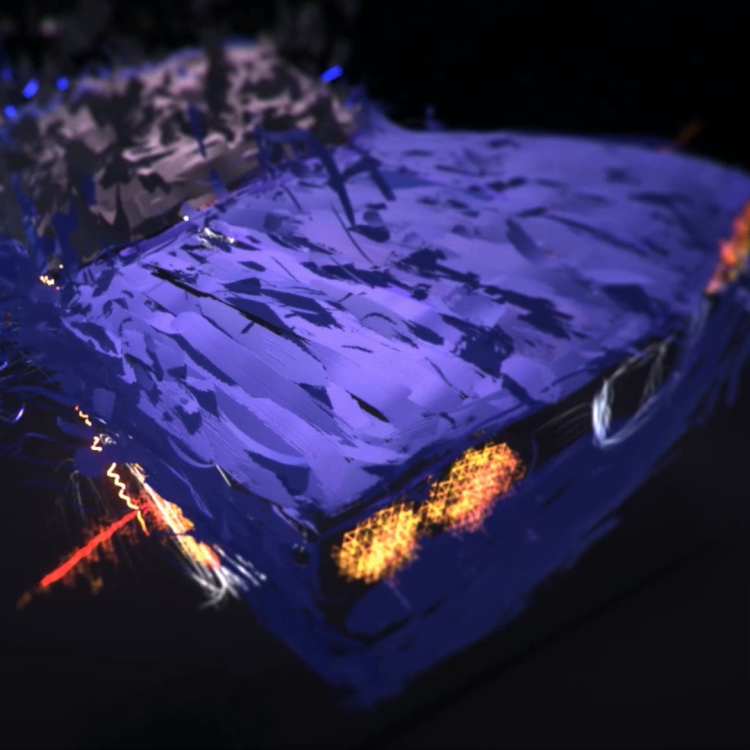
Rhode is known for his interventions in public spaces, where he uses walls as canvases to depict imaginary worlds. The drawings are just the first step in Rhode’s process. These walls become sites of interactivity and performance and their ephemeral existence is captured through photographs, videos, and stop motion animation.
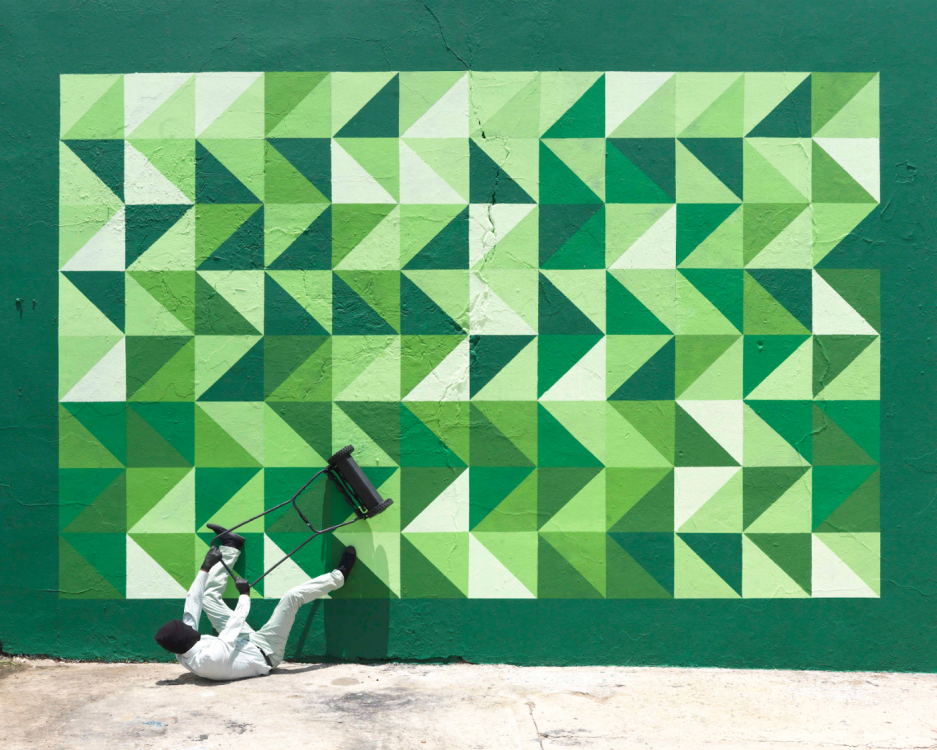
A sole protagonist, sometimes Rhode himself, or multiple figures together are shown interacting with the murals, seemingly manipulating them. These interactions are captured in a succession of photographs and the movements appear to alter the two-dimensional drawings, transforming the urban space into a fictional storyboard.
Rhode’s interest in wall drawings is inspired in part by South Africa’s history of wall drawing, from Bushman cave paintings, to mural art as a form of protest during Apartheid, to street and graffiti art today. Most of Rhode’s works are created in Johannesburg.

Several of Rhode’s works also involve a social element. The artist frequently works with local collaborators as well as educational groups and museum programs. In an interview with the New York Times he explained “my community are my studio assistants.”
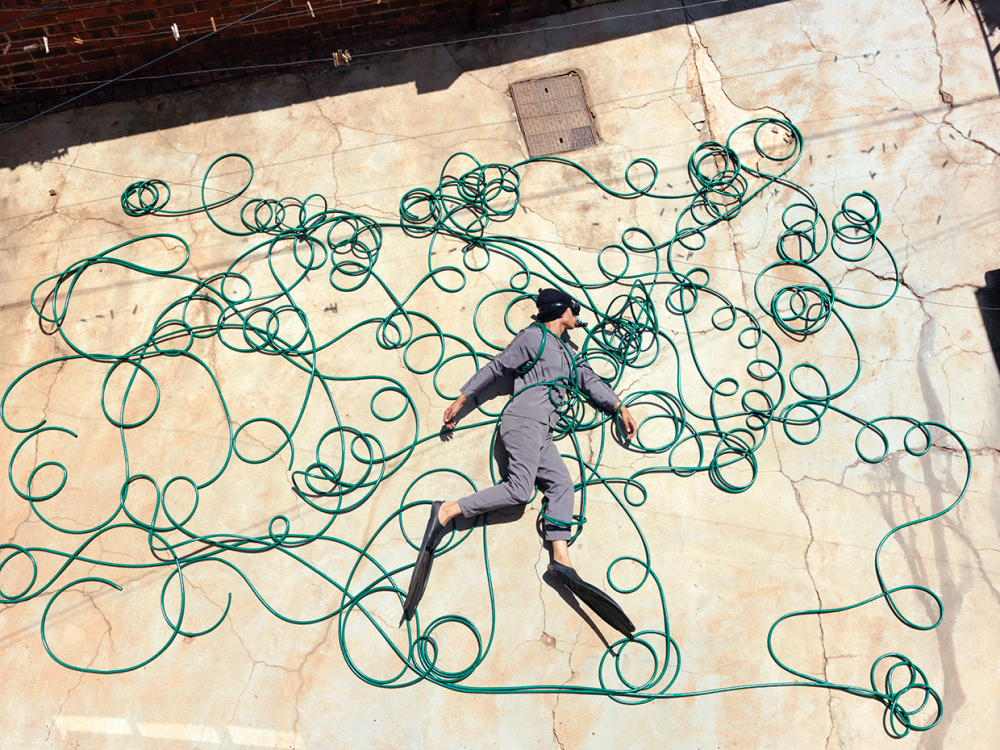
Inaugural NFT: Gusheshe
The basis for Rhode’s inaugural NFT Gusheshe is also drawing, but this time the canvas is a virtual one. The VR video content for the NFT was first produced during the artist’s residency at the Google Arts and Culture Lab in Paris in 2018.
Rhode’s inaugural NFT depicts a BMW E30, a car that acquired a cult-like street status in his home city of Johannesburg in the late 1980s and early 1990s. The title of the work, Gusheshe, is the colloquial term for the car, derived from the word Akusheshe, which is slang for “quick.” For Rhode, the car, imbued with cultural meaning, is a lens through which to explore ownership, social status, and identity.
The appropriation and modification of cars was more than the expression of gangster flamboyance and came to represent the destabilization of status symbols within white minority rule in South Africa. Rhode’s NFT references Afrofuturism by reimagining an everyday object rooted within a black experience within a virtual future.
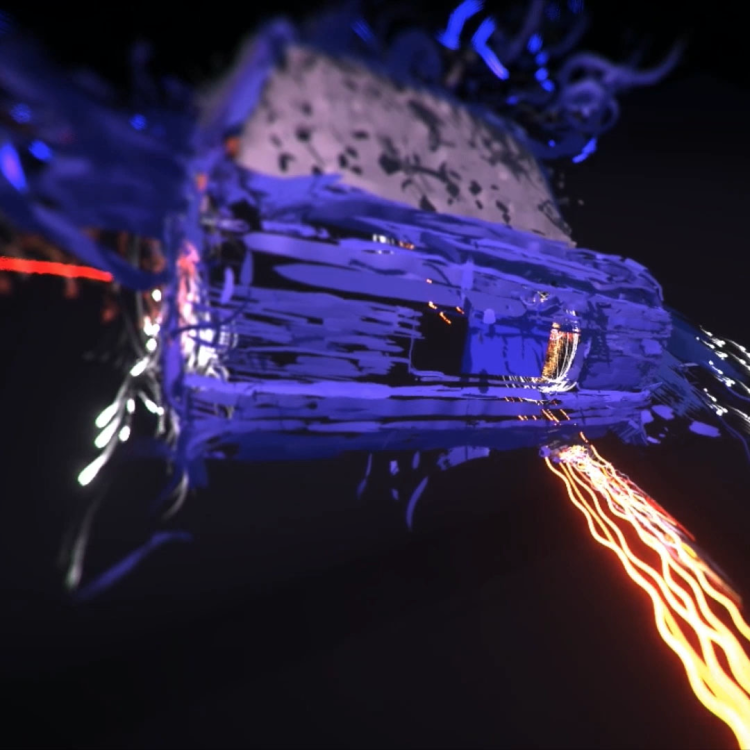
Interview with Robin Rhode
Vinciane Jones, Head of Community at Verisart, the blockchain certification platform, spoke to Robin Rhode about his inaugural NFT.
VJ: This isn’t the first time your work has featured cars, what about cars do you think makes them so culturally significant?
RR: I first began incorporating bicycles in my wall drawings as symbols of youth, freedom, a form of a rite of passage, but significantly as symbols of objects denoting movement and dynamism that allow our bodies to shift through space and time. How we navigate space from one point to another became a visually layered experience to explore visually. The object drawn on the wall, portrayed, remains a static drawing but coupled with a performative action it slowly begins to move and become dynamic. This idea began to extend towards motor vehicles and how various cultures appropriate auto bodywork to symbolize cultural identity. A car becomes a status symbol. It signifies economic and class structures. Therefore, over the years, I’ve attempted to draw and steal my cars, sometimes removing the tires and replacing them with bricks. I’ve even washed my car drawing in front of a live museum audience as a means to subvert the ownership of my creation. So it has been an ongoing dialogue between myself and the motor vehicle.
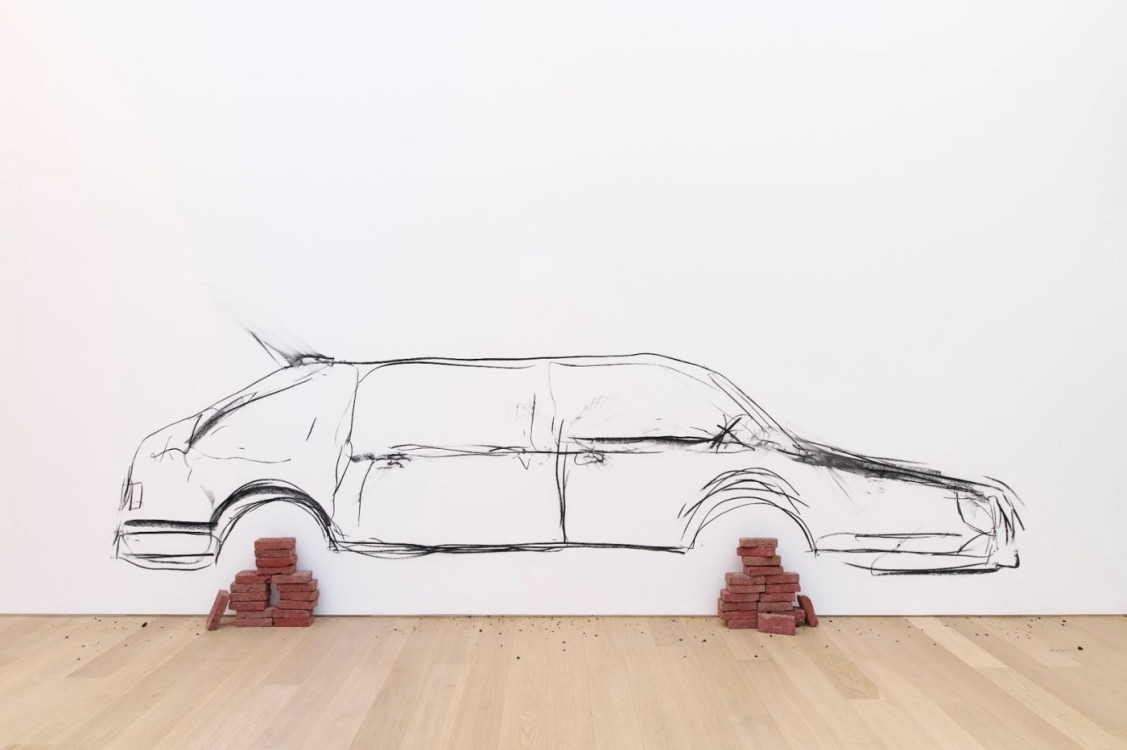
VJ: Your work Gusheshe refers to the Apartheid era but also to Afrofuturism, how are your experiences in South Africa during the Apartheid era and your exploration of Afrofuturism linked?
RR: I would not say that Gusheshe is strictly linked to the apartheid era because everything in South Africa could be connected or rooted to that moment in history. I am saying that certain subcultural practices were rooted in that political period but gained an even more widespread mainstream following during the decades of democracy that came after the fall of apartheid. As a new generation began to reclaim public space, the Gusheshe (BMW) became the mechanism to reflect on this new economic empowerment and social expression. Afrofuturism is linked to an imaginative future or world where the landscape can be proactive in generating the technological, cultural wealth of a society. It is a fictional world that can be reimagined, as I have now done with my latest NFT. I tried to reimagine the Gusheshe in the not-so-distant future gliding through space and time rather than the dusty streets of townships. The surface of the vehicle becomes lines of energy.
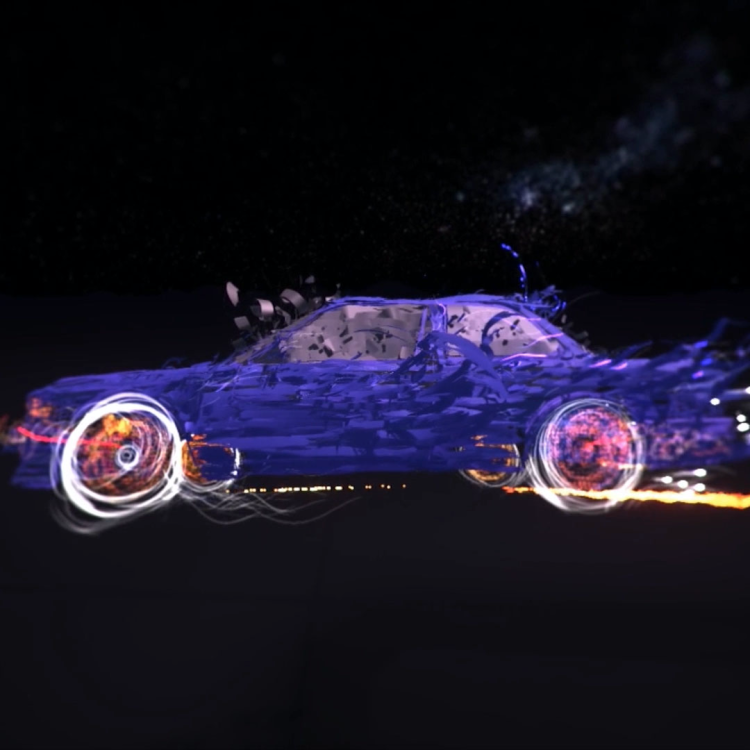
VJ: The original VR work was created during your residency at the Google Arts and Culture Lab in Paris in 2018. Could you tell us a little more about that experience and working with VR?
RR: VR became a means to literally teleport myself out of my reality into a virtual world that I could not only choose but also create. One of the fascinating aspects of working in VR is the possibility to import content into the virtual space. Also, the ability to visually document one’s VR content in the form of video clips inside the virtual space excited me tremendously. This is also how I work in general, documenting my wall drawings and performative actions through photography and video. I followed the same premise inside VR.

Certified by Verisart
Robin Rhode’s inaugural NFT is certified by Verisart, an award-winning blockchain certification platform. Designed to empower artists to tell the story of their work, the digital certificates include additional images, videos, and documents. For collectors, Verisart’s patent-pending Certificates of Authenticity (COA) form an integral part of collecting NFTs. They provide confidence in the identity of the artist and the verified history of the artwork.
VJ: What interested you about the NFT space?
RR: I am excited by showcasing my work on digital platforms as I have been producing digital work since around 1998 in the form of simple flash animations. My working modes have since progressed into other digital media, and recently into/with VR. I’m always excited by the potential of art, and I see the NFT space as a valid context for visual art.
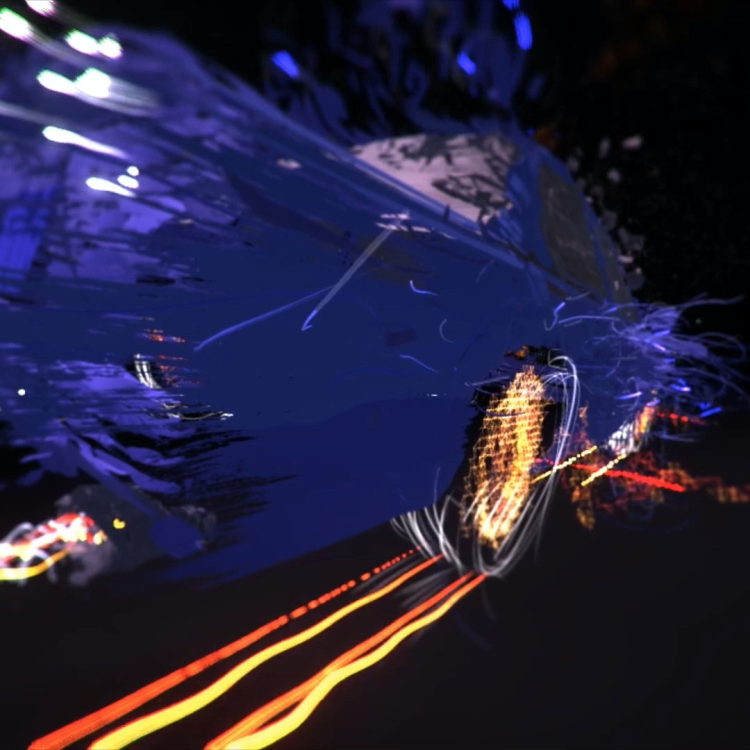
Robin Rhode currently has a retrospective show at the Voorlinden museum in the Netherlands. The exhibition celebrates the artist’s career from 2000 to today, demonstrating Rhode’s diverse practice as well as the importance of drawing as the basis of many of his works. The artist’s first steps into the NFT space demonstrate the extent of Rhode’s diverse approach to creative expression and present an opportunity for the artist to build on the digital work he has produced to date.
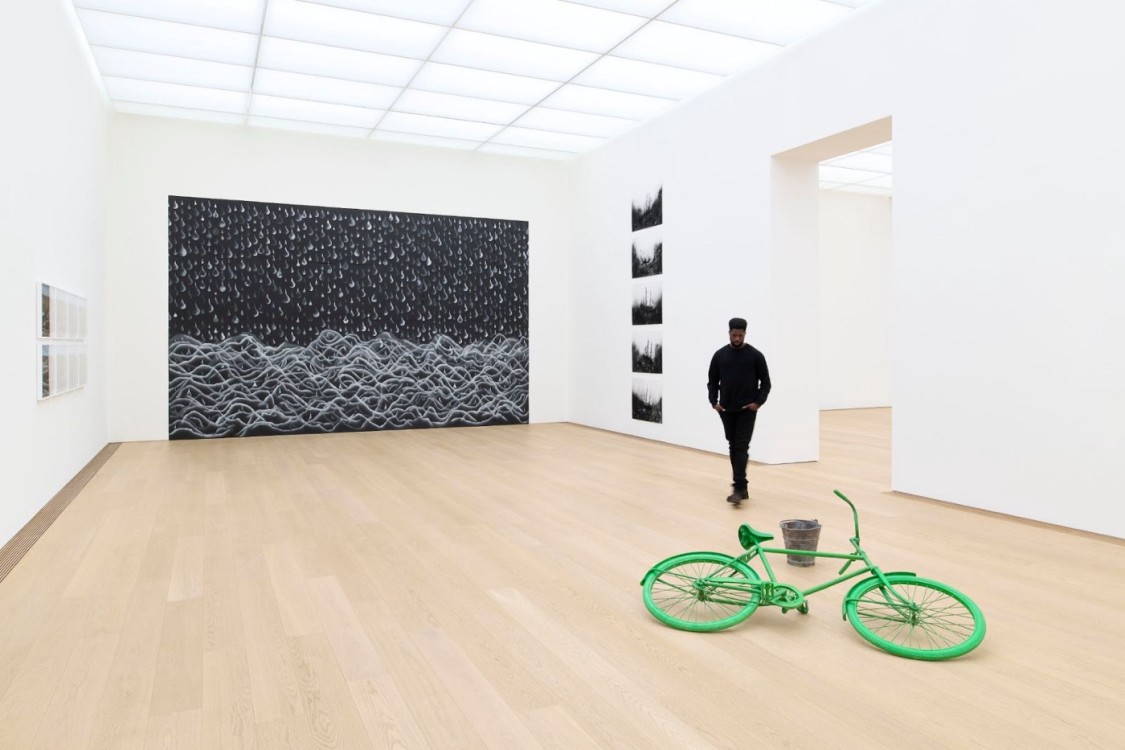
Bidding for Robin Rhode’s inaugural NFT, Gusheshe, closes at 12pm EDT on June 13.